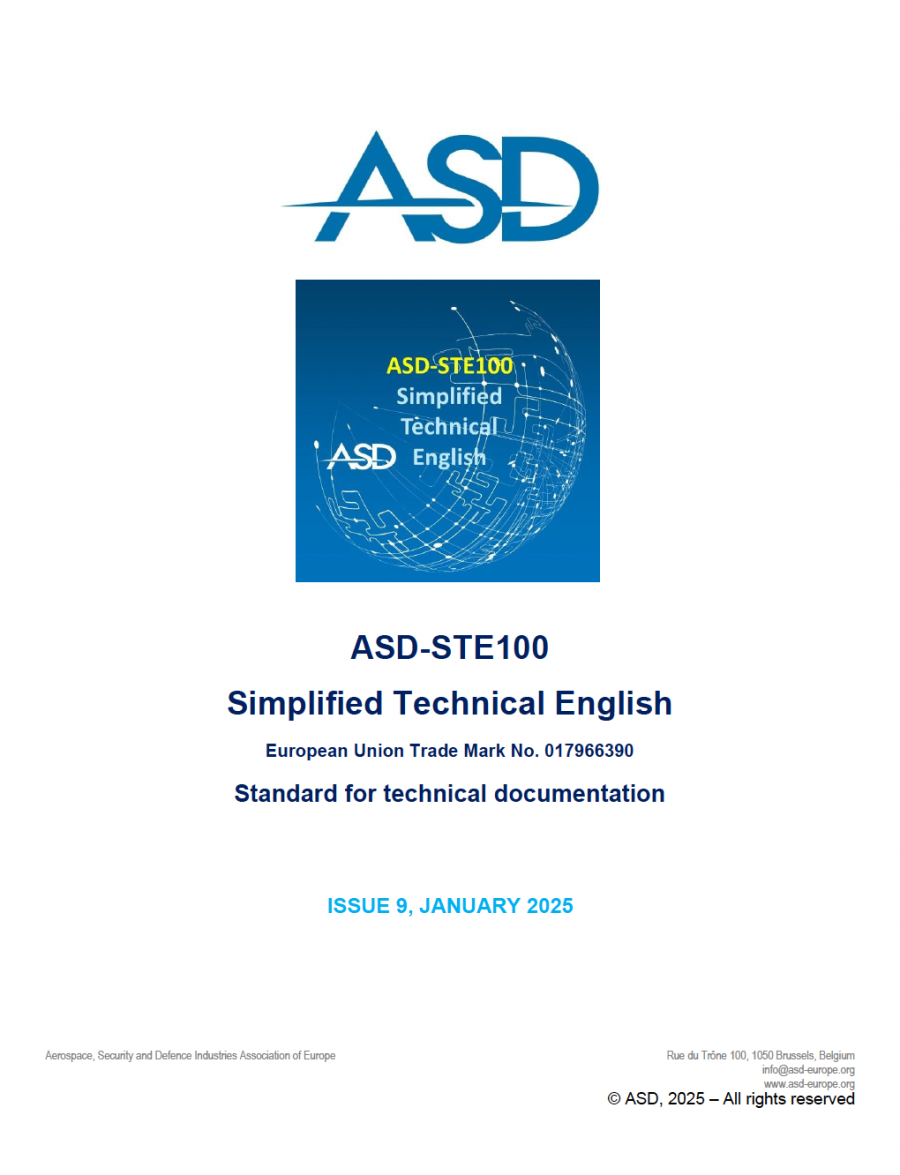The latest version of Simplified Technical English (STE), Issue 9 of ASD-STE100, arrived on January 15, 2025. This update, three years in the making, signifies more than just a revision; it marks STE’s transition from a specification to a full-fledged international standard.
Developed by the ASD Simplified Technical English Maintenance Group (STEMG) with input from national and multi-country Support Teams (STEST), Issue 9 reflects a commitment to clarity, safety, and alignment with international standards. The STEMG, comprised of industry experts and linguists, meticulously reviewed 160 items and change forms, including 11 specifically related to meta-terminology. This collaborative process ensures the standard meets the needs of technical writers and, ultimately, the end-users of the documentation.

From Specification to Standard: A Key Shift
This isn’t just a name change. The move to “standard” reflects STE’s broader applicability. While a specification governs individual projects, a standard establishes universal rules. The official document title now reflects its registered trademark: “ASD-STE100 Simplified Technical English: Standard for Technical Documentation.”
Originally designed for aerospace and defense, STE is now used across various sectors, including rail, medical, automotive, and renewable energy. Its focus on clear, unambiguous language reduces human error, especially for non-native English speakers, leading to improved documentation quality, enhanced safety, and smoother global communication.
The Core of STE: Rules and Dictionary
ASD-STE100 is built on two pillars: writing rules and a controlled dictionary. The rules provide strict guidelines for grammar, style, and sentence structure, making content easily understandable for a global audience. The dictionary lists approved words, their definitions, and usage examples, along with a list of unapproved words and alternatives. This standardization of terminology ensures consistency and avoids confusion.
What’s New in Issue 9?
While no new rules were added, 31 of the 53 existing rules were clarified. The dictionary saw significant updates, with 555 entries revised for accuracy and relevance. A major focus was the meta-terminology review. In the context of ASD-STE100, terminology refers to the words and phrases used within the standard itself, such as “technical noun” and “technical verb.” Meta-terminology, on the other hand, refers to the terms used to describe and categorize those terms, such as “noun” and “verb.”
Essentially, meta-terminology is the language we use to talk about the language of the standard. It provides a framework for understanding the relationships between different types of terms and how they should be used.
The distinction between terminology and meta-terminology is important because it helps to ensure that the standard is clear, consistent, and easy to understand. By using precise meta-terminology, the ASD-STE100 Maintenance Group can avoid ambiguity and ensure that the standard is interpreted correctly by technical authors and translators.
Meta-Terminology Refresh: Aligning with International Standards
Issue 9 aligns with ISO 1087-1:2019, modernizing legacy classifications. “Technical name” and “technical verb” are now “technical noun” and “technical verb (term).” Subject field classifications have also been refined, with new categories added under Rules 1.5 and 1.12.
User-Centric Approach: Balancing Precision and Practicality
The STEMG prioritized usability for technical writers, recognizing that most aren’t linguists. Simplicity was key, even while maintaining terminological precision. For example, the dictionary retains the “word” column designation instead of more complex lexicographic terminology. Balancing correct meta-terminology with practical application was a key challenge. The goal was always to empower authors to create clear, accessible documentation. Defining technical verbs, in particular, required careful consideration to ensure both accuracy and ease of understanding.
The Future: AI and Collaboration
The STEMG and STEST are now exploring how AI can enhance STE compliance checks, provide real-time feedback, and automate terminology updates. Collaborations with universities are examining AI-driven tools to streamline technical documentation, improve accessibility, and ensure interoperability.
Issue 9 represents a significant step for ASD-STE100. Its evolution to a global standard, coupled with meta-terminology updates and alignment with international standards, ensures its continued relevance. With a focus on AI and digital transformation, STE is poised to evolve further in the age of smart documentation and Natural Language Processing.




 A €210 fee discount is applicable when you also sign up for
A €210 fee discount is applicable when you also sign up for  Certified STE Masterclass | US Canada Online.
Certified STE Masterclass | US Canada Online.
